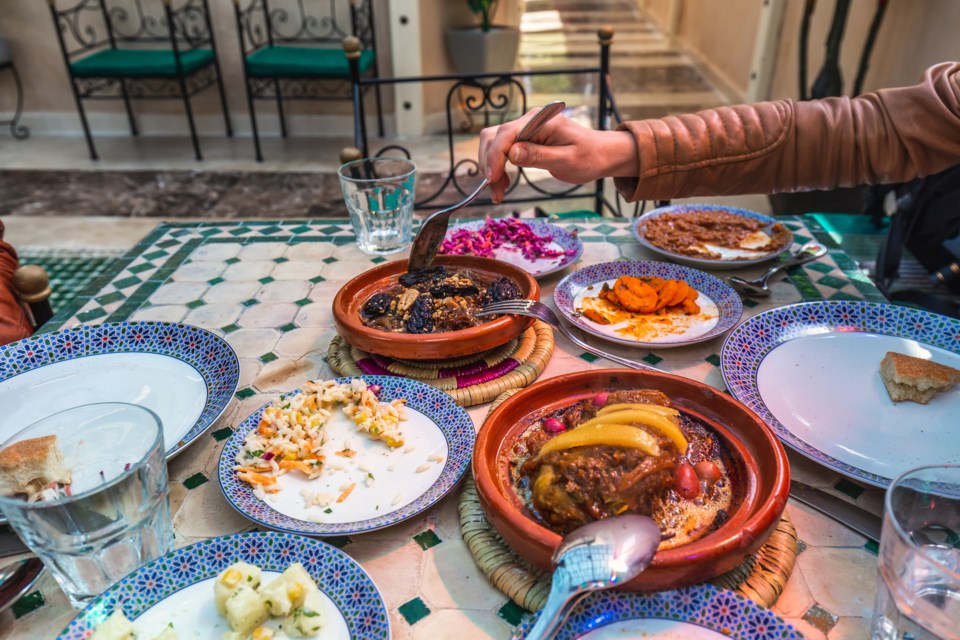A couple weeks ago, local Hassan Lamine spoke with a group of Grade 6 students at Whistler Waldorf School about Ramadan, the holy month of fasting, prayer and community observed by Lamine and nearly 2 billion other Muslims around the world.
Leaving the school, the native Moroccan couldn’t help but be impressed by the kids he met.
“The teacher gave them all a subject [related to Ramadan] to research for it and they knew a lot. I was impressed,” said Lamine. “We went for one hour and it was not enough time. The kids were asking me a lot of questions. I liked it.”
Lamine, a trained chef and hospitality professional who first arrived in the resort in 2012, is one of a small but tightknit community of Moroccans who call Whistler home (a group that, pre-pandemic at least, was steadily growing, largely thanks to a federal immigration program that brings skilled French-speaking workers to Canada.)
A food-obsessed nation renowned for its cuisine and skill in the kitchen, chances are you’ve probably tasted dishes made by the hand of a Moroccan if you’ve dined out in Whistler over the past few years. And, since we’re in the thick of Ramadan, what better time to catch up with Lamine and fellow Moroccan chef Said Lotfi to hear about the Ramadan culinary traditions of their homeland, and their favourite things to eat after a long day of fasting?
Most adult Muslims—with a few notable exceptions to accommodate travel, illness, and specific dietary needs, like diabetes—will fast (or sawm) during Ramadan, the ninth month of the Islamic calendar, commemorating Muhammad’s first revelation, from dawn ‘til sundown. Each day, before dawn, Muslims observe a pre-fast meal called the suhoor, which is typically a light meal enjoyed before the first prayer of the day.
“You eat something like yogurt or a smoothie or a small sandwich,” Lamine explained. “Then you pray, and you may go back to sleep before dawn.”
During the daytime fasting period, Muslims abstain not just from eating and drinking, but sinful thoughts and speech, smoking and sex, with the goal of redirecting one’s heart and mind away from worldly matters, towards the spiritual. Muslims believe this month of fasting teaches them the values of sacrifice and empathy and motivates acts of selflessness and generosity towards the less fortunate.
Once the sun goes down, families gather for iftar, the fast-breaking meal of the day, traditionally started with dates, following Muhammad’s practice of breaking fast with just three dates. In Morocco, famous for its flavourful and chewy Medjoul dates that are never far from any dinner table, this is also a welcome opportunity to savour a national delicacy.
In predominantly Sunni Morocco, it’s tradition to have a small bite before adjourning for the Tarawih, a prayer that involves reading long passages from the Quran.
“You don’t want to go to Tarawih with a full stomach, because the prayer can last two hours,” Lamine explained. “You could feel sleepy. You don’t want to do that.”
After Tarawih, however, it’s time to chow down. Moroccan families will eat everything from hearty tagine, roast chicken and couscous to a range of delectable sweets and rich pastries for their main fast-breaking meal. A country that excels at dessert, that can mean thick semolina-flour pancakes called harscha; a sesame cookie made from strips of folded dough known as chebakia; and sellou, a nutty confection made from ground almonds and sesame, flavoured with anise and cinnamon.
“The body needs sugar sometimes when you break the fast,” Lamine said.
But what is likely the most popular fast-breaking dish for Moroccans is a savoury soup called harira, made with dried legumes, and traditionally cooked with lamb or lamb broth.
“I don’t know where it comes from, but it’s a famous dish for Ramadan, maybe because it has many nutritious things, like chickpeas, fava beans and lentils. Also, it’s not heavy and something nice for people to eat after 15, 16 hours of fasting,” said Lotfi, the Nita Lake Lodge chef who prepared harira last week as part of the Whistler Multicultural Society’s regular Multicultural Community Kitchen series.
“It’s a Moroccan thing. You can find other kids of soups there, but the harira is something 100-per-cent Moroccan you won’t find anywhere else.”
Of course, I would be remiss if we didn’t touch on Eid al-Fitr, the epic feast, open-air prayer and community celebration that marks the first day after Ramadan concludes. These joyous occasions start bright and early and can last for hours, and commonly involve the entire extended family, if not the wider community, to celebrate the end of fasting.
Needless to say, gargantuan amounts of food are consumed. But just as important, if not more, are the acts of charity that go along with it.
“You can give it as money or wheat or anything you have too much of at home. If you use rice, you can give rice to someone, or wheat or oatmeal, anything you are feeding yourself with you can use it as charity to give someone who can’t afford it,” Lotfi explained. “It’s a very nice, happy day after fasting for a whole month. It’s a really happy day.”





